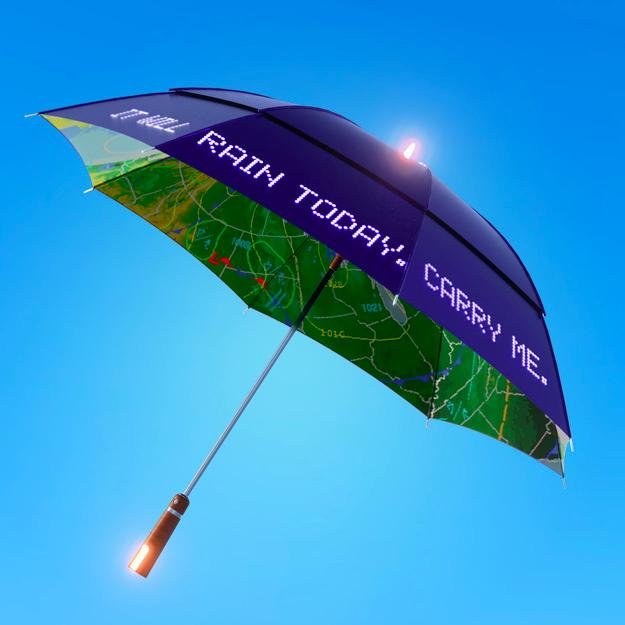 It seems as though everything is becoming connected. It’s not just smartwatches from the likes of Apple or Samsung. It’s also cars, homes, health, industry and agriculture. We have connected babies (well onesies), WiFi sniffing cats and even (the slightly pointless) a connected yoga mat. That’s all very well, but the mere existence of technology does not equal adoption. Cue Cat is my favourite example of a large technology investment with no user take-up. When it comes to the IoT Michael Humphrey writing in Forbes summed it up well – we have an ‘enthusaism gap’.
It seems as though everything is becoming connected. It’s not just smartwatches from the likes of Apple or Samsung. It’s also cars, homes, health, industry and agriculture. We have connected babies (well onesies), WiFi sniffing cats and even (the slightly pointless) a connected yoga mat. That’s all very well, but the mere existence of technology does not equal adoption. Cue Cat is my favourite example of a large technology investment with no user take-up. When it comes to the IoT Michael Humphrey writing in Forbes summed it up well – we have an ‘enthusaism gap’.
 Clearly, going from innovation to adoption is not easy. Bill Buxton talks about The Long Nose of Innovation. Development happens over many decades until we create a truly usable product. The computer mouse and smartphone touch screens are two examples. How could we apply the long nose to the IoT? Some people suggest it will reach true innovation when it becomes invisible and we don’t know it’s there. That might be true in part, but I think there is a flip side – we need to create more enthusiasm by making the IoT more visible and giving objects a personality.
Clearly, going from innovation to adoption is not easy. Bill Buxton talks about The Long Nose of Innovation. Development happens over many decades until we create a truly usable product. The computer mouse and smartphone touch screens are two examples. How could we apply the long nose to the IoT? Some people suggest it will reach true innovation when it becomes invisible and we don’t know it’s there. That might be true in part, but I think there is a flip side – we need to create more enthusiasm by making the IoT more visible and giving objects a personality.
Things That Tweet
The micro-blogging channel has been put to good use, not just by people but also Tweeting objects. We have Mars Curiosity (@marscuriosity), the Crossrail Tunneling machine, Big Bertha (@BerthaDigsCR99) and there’s Tom Coates’ Tweeting house (@houseofcoates). Fun? Yes. But it seems to go deeper than that. @houseofcoates has 1400 followers (slightly more than I do), and some of them get into conversations with the house (and very occasionally, it replies).
 Enchanted Objects
Enchanted Objects
MIT Lab scientist, David Rose, harks back to the days of beautifully crafted artifacts that fulfilled just specific tasks. He worries that the future of most objects will be little more than a black slab of glass without any enchantment (and without personality). He is on a mission to create and promote more enthusiasm with enchanting objects. Often, these objects have fewer functions but they do them beautifully. He gives the example of the umbrella, where the handle glows when it is going to rain or a medicine bottle that chirps to remind you to take a pill. Simplicity and delight are the key to the engagement.
Simple, Fun Experiences
Taking a cue from David Rose, if we are to engage with the IoT then we need to focus on simplicity and fun. The Smart Crossing was a recent Cannes Lions winner for Smart Cars that did just that. To discourage pedestrians from crossing in front of the traffic they created a light where the red, stop person danced. Not only that, but the moves were created by real people in a booth nearby. Of course, everyone waited at the lights, entertained for a few minutes by a dancing person.
More Personality
Brad The Toaster is a more anthropomorphic incarnation. Though an artistic concept, rather than a real thing, it brings a personality to the problem of over consumption. Brad is one of many connected toasters that can’t be owned (he’s more like a cat in that respect). You can look after Brad and use him, but if he is neglected then he will simply give himself to someone else. This idea could be applied to other products like self-driving cars. Given that the vehicles we own spend most of their time parked up, it makes little sense to own a car . However, we have a strong emotional relationship with them. Even in a self-driving world where the car just appears when you want it, giving them up won’t be so simple. Perhaps, though, if they have personality more like Brad The Toaster then we’ll be more likely to switch to a simple rental model.
‘Clothes have Feelings Too’
Taking the Brad concept further, I’ve been developing an idea called The Internet of Clothes. In developed nations we buy too many clothes and wear very few of them. One solution is that your clothes will ask to be worn. They will Tweet you based on the weather, frequency of wear or occasion. And if you ignore them? They will contact a charity for recycling.
I hope that giving clothes a sense of personality it can help people make better use of the resource. There’s no reason why we can’t do the same for other IoT objects. At the simplest level, we can feel more engaged but at a deeper level, it’s also about building an anthropomorphic relationship. For us humans it makes the whole IoT easier to comprehend.
